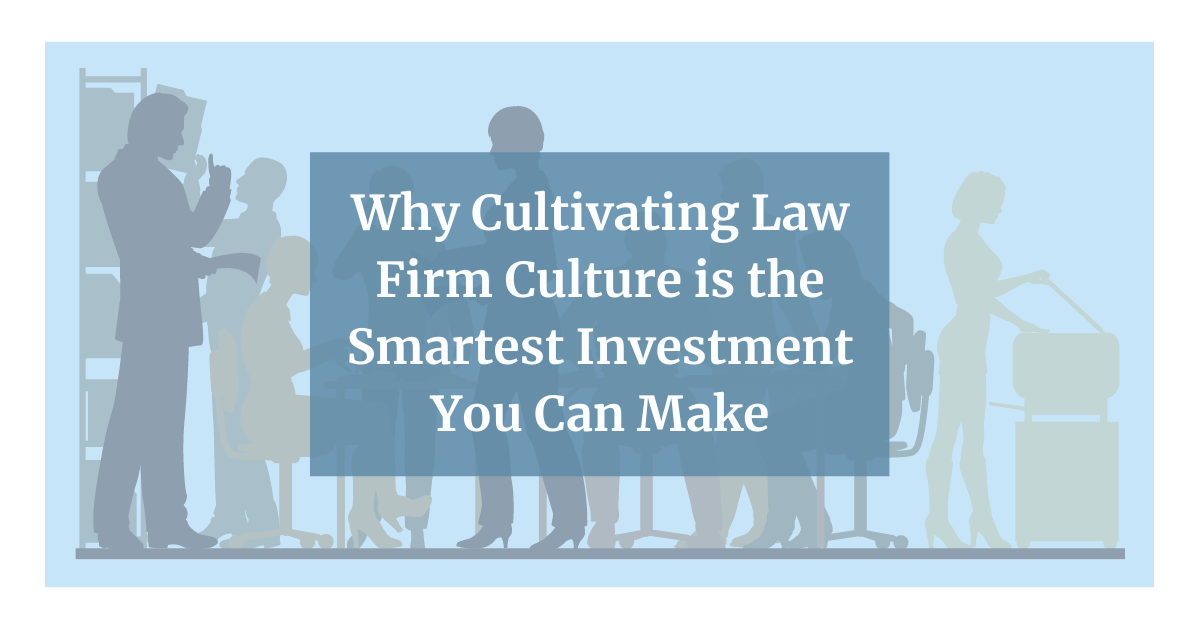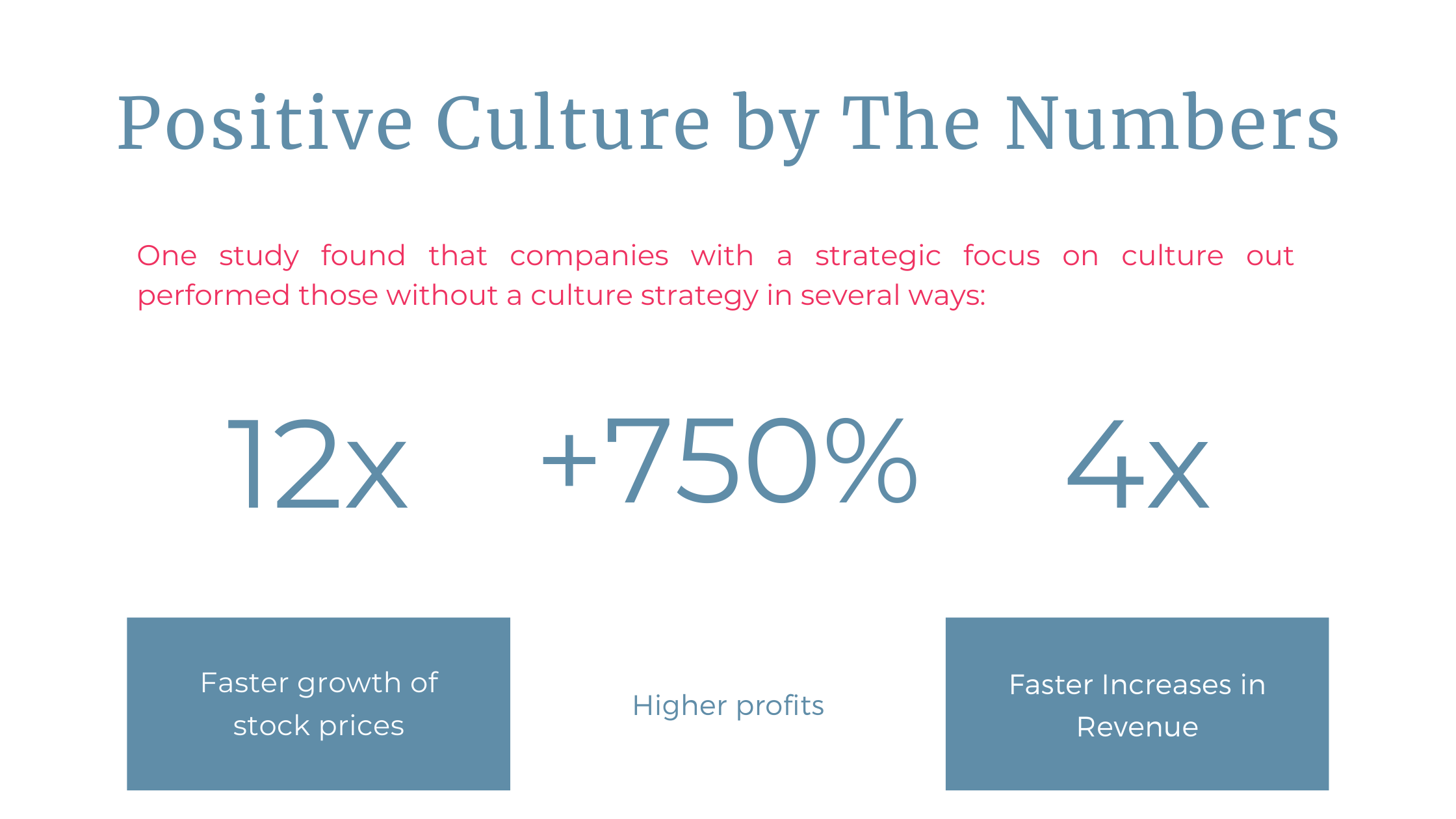Why Cultivating Your Law Firm’s Culture is a Smart Business Strategy

Culture Isn’t Just a Buzzword
When lawyers hear the words “workplace culture” it often brings to mind Silicon Valley startups with foosball tables, basketball courts and fun snacks. But that is like saying a candidate would make a good president because she is an outstanding tennis player. It’s a fun fact, but probably not relevant to the job of leading the country. Culture goes to the heart of your law firm and shows up in the attitudes and experiences of each person who interacts with your firm. Culture is defined by your firm’s character, its mission, and its values.
Signs of a Positive Firm Culture
Because culture is tied directly to a firms’ particular blend of people, values, and goals, there are no bright-line rules for what a good culture looks like. Companies with positive cultures do have a few traits in common.
- Diversity across all roles and levels.
- Higher than average retention rates.
- Transparency around decision-making and organizational health
- People are evaluated on the quality of their work, not the quantity
- Flexible work hours for everyone
- Communication, collaboration and knowledge sharing
In law firms with good culture, employees feel seen, heard, and understood. These employees are highly engaged, motivated, and understand how their role fits into the larger mission of the firm. Investing in a culture that fosters engagement and motivation has many benefits.
The ROI of a Positive Firm Culture (if You Must Know)
When it comes to explaining why firms should invest in culture, I agree with attorney Eric Farber who writes in his book The Case for Culture that “creating a workplace where people want to work is simply the right thing to do.” Law firms can be intense workplaces but that does not exempt leaders from making the firm a place where people generally feel good about working. It seems only logical that a culture where employees feel on edge, unsupported, and/or micro-managed is going to impact firms’ abilities to serve their clients. On the other hand, a positive culture leverages the talent within a firm to drive results a lesson IBM learned under former CEO Louis Gerstner who said:
Until I came to IBM, I probably would have told you that culture was just one among several important elements in any organization’s makeup and success — along with vision, strategy, marketing, financials, and the like… I came to see, in my time at IBM, that culture isn’t just one aspect of the game, it is the game. In the end, an organization is nothing more than the collective capacity of its people to create value.
– Louis V. Gerstner, Jr., Former CEO of IBM
If you still need convincing that cultivating culture is worth it, consider these startling statistics from a report by John Kotter:

There are also studies that link positive culture with increased productivity and increased client satisfaction. It is not just a matter of higher revenue. Employees are more likely to leave companies with poor cultures; this turnover, according to a 2019 SHRM study costs businesses over $40 billion per year. Even if employees stay, an unsupportive workplace can lead to chronic presenteeism – where employees physically show up to work, but are functionally absent due to health issues, caregiving responsibilities, or other personal challenges – costing businesses tens of billions of dollars each year.
Part of the reason culture has such a high ROI is because it is less about the size of the investment and more about how your firm decides where to invest. Often, executives prioritize compensation, benefits, and flexible work arrangements in order to attract and retain top talent. These things may contribute to a positive employee experience but they do not guarantee a good culture with motivated and engaged employees who stay. More often, employees value a meaningful work, opportunity for professional development, and respect between co-workers.
5 Keys to Cultivating a Positive Culture in Your Firm
- Start with what you know. Culture initiatives work best when they are clearly linked to the firm’s mission, values, and goals. Leaders need to be able to articulate these links and ensure that everyone across the firm understands how initiatives align with the firm’s overall strategy.
- Ask about what you do not know – and listen to the answers. When leaders start asking questions, it sets a tone of openness and empathy. If people are not going to be open about their needs, then firms can use anonymous surveys or consultants. Find out what your people need to do their jobs better.
- Involve the right people (aka, everyone.) Often new initiatives are rolled out to a group of people that are known for being willing to try new things or who are seen as having a vested interest. But culture is a firmwide concern. This means bringing in people from all levels and with different degrees of change resistance.
- Set the tone from the top. Just as new initiatives are often rolled out to the same group of people, they are often implemented by the same people too. Perhaps it’s HR, the Professional Development Chair, or other non-attorney departments. The problem is, these are not the people who are responsible for making the decisions. People take their cues from those with power. Leaders need to demonstrate that they are committed to a culture strategy.
- Acknowledge the elephant in the room. You know the one – it’s the belief that work is separate from life. As Farber explains, the “old saying that you should leave your personal life at the door is just ridiculous.” (And he wrote that before the pandemic.)
Tom Peters, best-selling business author, sums up the role of leaders in creating culture:
If you’re a leader, your whole reason for living is to help human beings develop – to really develop people and make work a place that’s energetic and exciting and a growth opportunity, whether you’re running a Housekeeping Department or Google.
– Tom Peters on Leading the 21st Century Organization (Interview with McKinsey & Co., 2014.)
Lawyers are notoriously resistant to change, but March of 2020 proved that when necessary, firms can and will change quickly. Firms have been given an opportunity to reset they way they do business while supporting their employees however and wherever they work. It will not be easy or painless, growth never is.
